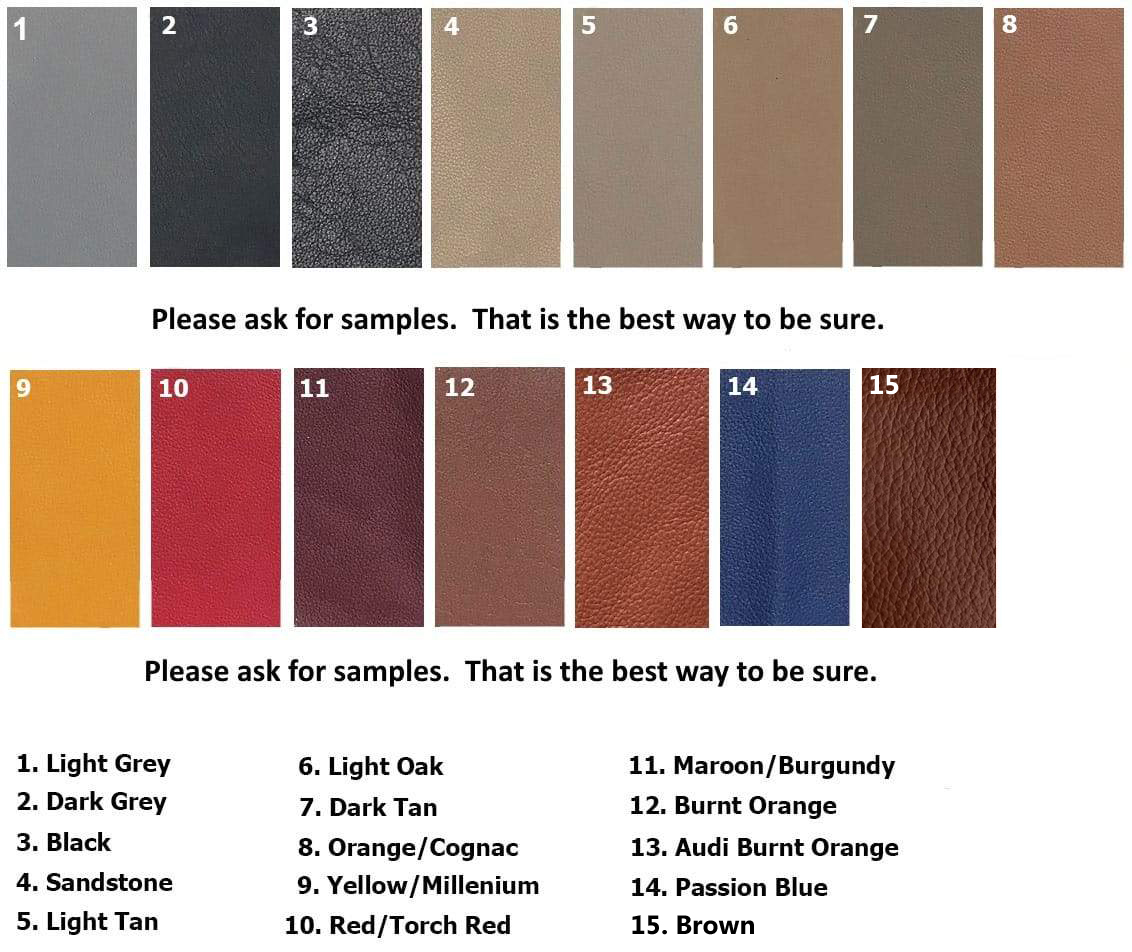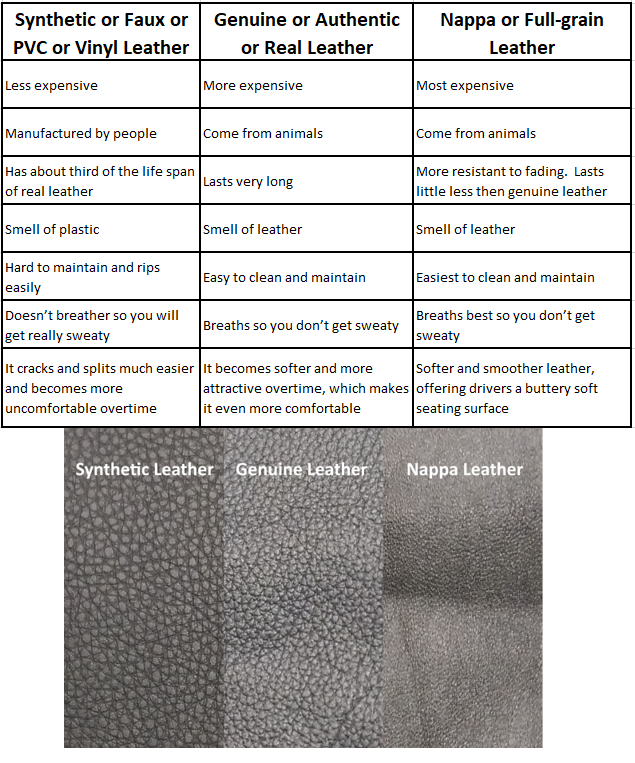The Climate Effect on Leather Seat Covers: How to Protect and Maintain Them
Leather seat covers are the hallmark of elegance and class in a car, but even with their grace and comfort, there is a potential for some work to ensure they remain impressive-looking, clean, and cozy in all weather conditions. The Climate effect on leather seat covers will wreck them over time, affecting both looks and durability.

If you live in an area where summer heat, winter freeze, or humidity reign supreme, your leather seat could be left to dry, crack, fade, or acquire some mild mold. It is critical to grasp those factors of leather durability- how the climate bears upon them if the seat covers are to last long.
This complete guide will cover the effects on car interiors due to hot climates, cold weather, and humidity on leather seats and some ways to care for these car seats and protect your investment.
How Weather Affects Leather Seat Covers
Leather, being a natural material, tends to respond quite severely to fluctuations in temperature and moisture. Different weather conditions impact leather durability factors with varying influences on how long your seat covers may last.
Exposure to High Temperatures and Sun: The Most Damaging Factor for Leather Seats
Leather seats' most influential environmental aspects are high temperature levels and direct sunlight. Car interiors in hot climates typically become unbearably hot, subjecting leather upholstery to ruin.
Effects of Heat on Leather:
Drying and Cracking: This explains how heat was applied. Leather naturally contains oils that keep it supple and less likely to crack. Too much heat causes these oils to evaporate, making them brittle and crack-prone.
Fading and Discoloration: Ultraviolet rays that come into direct contact with leather weaken the pigments, leading to fading and uneven coloration.
Sticky or Shiny Surface: Heat can change the leather's finish, making it sticky or overly glossy due to the breakdown of some protective coatings.
Solution:
Install sun shades or window tints to keep harmful UV rays out.
Park your car in shaded areas or use a car cover whenever feasible.
Make sure to moisturize leather regularly to restore moisture lost during drying.
Cold Weather and Leather Seat Stiffening
Cold weather presents different challenges for leather seats. As temperatures fall, leather stiffens and loses its suppleness, increasing the passage for cracks.
How Cold Conditions Affect Leather:
Brittleness: At low or freezing leather temperatures, this reduces the material's elasticity, making cracking much easier when applied to pressures.
Sudden Temperature Changes: Abrupt changes from cold outdoor air to heated cars cause the leather to expand and contract, destroying the overall structure over time.
Solution:
Warm up the car without blasting the heater on high.
Use seat warmers cautiously to avoid sudden temperature fluctuations.
Keep your car parked indoors or use insulated covers during winter.
Humidity and Moisture Damage
High humidity levels can lead to moisture accumulation in your car, affecting leather seats' longevity. This is particularly concerning in tropical or rainy climates.
How Humidity Affects Leather:
There can be mold and mildew growth because of moisture, contributing to foul odors and stains in the leather.
Sticky and damp feeling: Moisture will thus be absorbed and feel wet and sticky, eventually leading to more damage.
Solution:
Use car dehumidifiers or silica gel packs to absorb moisture.
Adjust air conditioning to a medium level to control indoor humidity.
Clean up spills as soon as they occur to prevent moisture from settling.
Other Factors Influencing Leather Durability in Your Seat Covers
Leather seat covers' durability relies upon various factors, some of which can be controlled by proper maintenance.
● Quality of Leather
In other words, not all leather is made equal. Better-quality leather, like full-grain or nappa, is less affected by weather than synthetic or poorer-quality leather.
● Even though the UV rays
Prolonged sun exposure is one of the leading causes of weather impact on upholstery , speeding up the aging process of leather seats.
● Temperature Changes
Changes from hot and cold very frequently can weaken the leather fibers, thus increasing their risk of developing cracks and stiffness.
● Maintenance
A well-kept leather seat cover can substantially give you a long life to your upholstery; care maintenance of car seats can help sustain its lifespan.
Preventing Further Damage to Leather Seats
Looking after the leather seats is an active process if they are to stay in pristine condition. These are top-upkeep tips based on varying weather conditions:
● Apply Quality Leather Conditioner
Conditioners put moisture back into the leather and save it from the environment. Conditioning should be done every 2-3 months or more often if you live in a high-maintenance area.
● Invest in Window Tinting and Sunshades
Reducing exposure to UV rays is one of the best ways to protect leather seat durability. Window tints and sunshades help maintain the coolness of your car's interior while protecting the leather from soft sun rays.
● Air Out the Interior of Your Car
Ensuring your car has good ventilation prevents an additional heating environment or too-high humidity. Open the windows a little to let some air in on hot days.
● Tidy up Spills as They Happen
Liquid can seep into leather and cause damage. Use soft microfiber cloths to wipe out spillage as quickly as possible.
● Try to Park Under Shade or Use Car Covers
Park under a shaded structure or use a car cover to protect your automobile from the extreme weather.
Long-Term Benefits of Proper Leather Seat Maintenance
The success of leather seat maintenance lies in observing not just their aesthetic but also their overall value addition in terms of comfort to your automobile in the long run. An immaculate interior in leather enhances the resale value of your car since potential buyers select clean and crack-free seats that emanate luxury and comfort. When allowed to excess wear, leather seats soon discolor, crack, or rot with mold, presenting a worn-out appearance inside the car.
Regular cleaning and conditioning significantly improve comfort. While cracked, dry leather can also be coarse and uncomfortable, well-trained leather keeps softness and flexibility to provide comfort during driving. The overall life of the leather would agreeably put very much on preventive care. Reap some savings by investing in OEM replacement leather seat covers whenever due and follow the due diligence on maintenance to avoid significant repairs or replacements due to weather damage later on.
Finally, protecting leather seats guarantees a healthier car atmosphere. The presence of bacteria and unpleasant odors produced by mildew and warm weather causes several allergies and can put someone off by how the inside of a car smells. By being cautious of what roof outpour shelter factors toward durability aberration for leather and preprocessing along with climate conditions, you will see a premium absorbent driving experience for a long while.
Knowledge of the climate and how it affects leather seat coverings are essential for keeping a luxurious car interior. Whether you drive in hot climates, cold weather, or humid conditions, proper leather seat care should be number one on your list.
Following these tips for car seat maintenance will help you extend the life of your leather upholstery while maintaining its good-as-new appearance. Investing in quality seat covers and proper maintenance will ensure that the leather seats are comfortable, stylish, and durable for your car's lifespan.
Frequently Asked Questions (FAQs)
1. How often should I condition my leather seat covers?
It’s recommended to apply leather conditioner every 2-3 months. If you live in a hot climate, you may need to condition your seats more frequently to prevent drying and cracking.
2. What’s the best way to clean leather seats without damaging them?
Use a mild leather cleaner and a microfiber cloth. Avoid harsh chemicals, as they can strip natural oils from the leather and cause premature wear.
3. Do leather seat covers fade over time?
Yes, prolonged exposure to UV rays can cause fading and discoloration. To prevent this, park in the shade, use window tints, and apply a UV protectant spray.
4. Can cold weather damage leather seat covers?
Cold weather can make leather stiff and brittle, leading to cracks. To protect them, warm up your car gradually and use seat warmers cautiously to avoid sudden temperature changes.
5. How do I prevent mold and mildew on my leather seats in humid climates?
Use car dehumidifiers or moisture-absorbing packs inside your vehicle. Also, ensure proper ventilation and wipe down your seats regularly to prevent excess moisture buildup.


